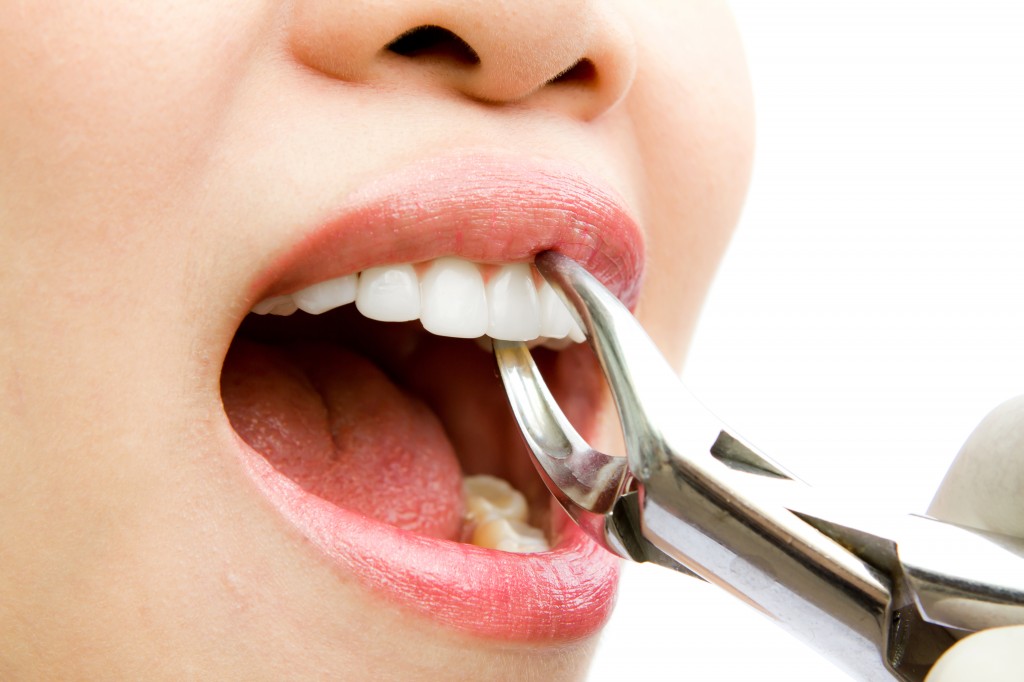 Even with advancements in modern dentistry, tooth extraction is still a common procedure that is completed. In some cases, it is the only choice that can be made when a tooth is deemed non-restorable. In the past, we often would simply remove the affected tooth and allow the area to heal. Later on, if the patient had decided to replace the missing tooth, we could offer bridges and partials to do so. But, that has all changed now that dental implants are a viable choice, and in a lot of cases, the preferred treatment method for replacing missing teeth.
Even with advancements in modern dentistry, tooth extraction is still a common procedure that is completed. In some cases, it is the only choice that can be made when a tooth is deemed non-restorable. In the past, we often would simply remove the affected tooth and allow the area to heal. Later on, if the patient had decided to replace the missing tooth, we could offer bridges and partials to do so. But, that has all changed now that dental implants are a viable choice, and in a lot of cases, the preferred treatment method for replacing missing teeth.With dental implants becoming more and more common in everyday dentistry, we also have to keep this in mind when it comes time to complete a procedure that can have an impact on future implant placement and success. Dental extractions have a direct impact on the supporting bone and tissue and thus, the future foundation for a dental implant. Here are some important facts to consider in your treatment planning decisions of whether to complete socket grafting or not:
- When a tooth is extracted, research [1]shows that the average reduction in width of alveolar ridges was 3.87mm; mid-buccal height loss was 1.67mm and mean crestal height change 1.53mm was noted post-extraction with no socket preservation procedure completed.
- Another study [2] showed in human hard tissue, horizontal dimensional reduction (3.79 ± 0.23mm) was more than vertical reduction (1.24 ± 0.11mm on buccal, 0.84 ± 0.62mm on mesial and 0.80 ± 0.71mm on distal sites) at six months. Percentage vertical dimensional change was 11 to 22 percent at six months. Percentage horizontal dimensional change was 32 percent at three months, and 29 to 63 percent at six to seven months. Human re-entry studies showed horizontal bone loss of 29 to 63 percent and vertical bone loss of 11 to 22 percent after six months following tooth extraction. These studies demonstrated rapid reductions in the first three to six months that was followed by gradual reductions in dimensions thereafter.
As you can see, when we remove teeth and implants are part of the treatment plan, we have to consider what has to be done now that there is an extraction site. Socket preservation procedures can be straightforward and predictable and in a future article, I will discuss these options and their considerations.
References:
1) Van der Weiiden F, Dell'Acqua F, Slot DE. "Alveolar bone dimensional changes of post-extraction sockets in humans: a systematic review." J Clin Periodontol 36.12 (2009): 1048-58
2) Tan WL, Wong TL, Wong MC, Lang NP. " A systematic review of post-extractional alveolar hard and soft tissue dimensional changes in humans." Clin Oral Implants Res. 5 (2012) 1-21
Jeff Lineberry, DDS, FAGD Visiting Faculty. [ www.jefflineberrydds.com ]